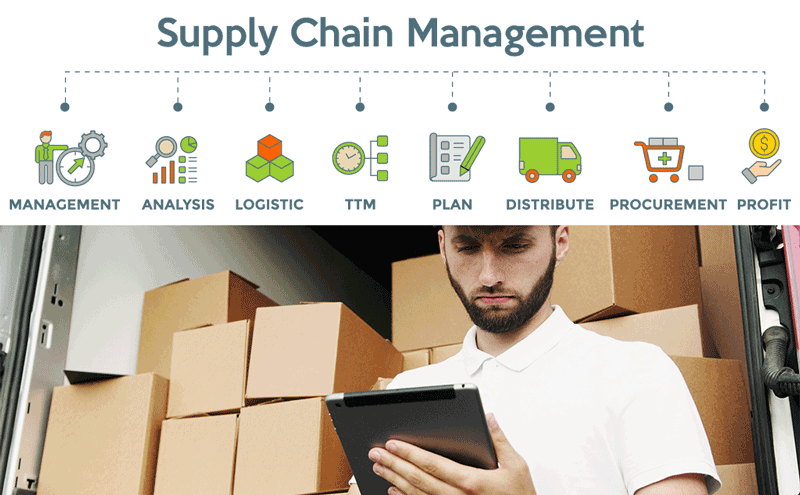Supply chain modeling is an invaluable tool that businesses can use to optimize their supply chains. Through advanced modeling techniques, companies can analyze various scenarios and identify areas for improvement within their supply chains. In this blog post, we’ll cover the fundamentals of supply chain modeling, its advantages, and how it can assist businesses in optimizing their processes.
What is Supply Chain Modeling?
In summary, it’s practice of creating a mathematical or computer-based model of a company’s supply chain operations. This model allows businesses to simulate various scenarios and assess the effects of different decisions on their supply chains.
Benefits of Supply Chain Modeling:
- Improved Forecasting: It can assist businesses in improving their forecasting accuracy by analyzing historical data and recognizing trends and patterns.
- Reduced Costs: By simulating various scenarios, businesses can identify opportunities for cost reduction and optimize their supply chain operations accordingly.
- Increased Efficiency: It can assist businesses in increasing their efficiency by identifying bottlenecks and optimizing processes.
- Risk Management: By analyzing various scenarios, businesses can identify potential risks in their supply chains and create contingency plans to address them.
How It Works:
- Data Collection: The initial step is to gather information from various sources, such as suppliers, customers, and internal systems.
- Model Development: Once the data has been collected, a mathematical or computer-based model can be constructed to simulate various scenarios.
- Scenario Analysis: The model is then utilized to simulate various scenarios and the outcomes are analyzed to identify areas for improvement.
- Optimization: With this analysis, businesses can optimize their supply chains to reduce costs, boost efficiency and minimize risks.
Modeling Types of Supply Chains:
- Network Design: This type of modeling helps design an optimal supply chain network based on factors such as transportation costs, inventory levels and customer demand.
- Inventory Optimization: This type of modeling helps optimize inventory levels based on factors like demand variability, lead times, and service standards.
- Demand Forecasting: This type of modeling is employed to project future demand based on historical data and other factors.
This type of modeling is an invaluable tool that businesses can use to optimize their supply chain operations and boost profits. By simulating various scenarios, businesses can identify areas for improvement and optimize to reduce costs, boost efficiency, and mitigate risks. From network design and inventory optimization to demand forecasting and demand sizing, supply chain modeling helps businesses remain competitive in today’s ever-changing business world.
Need assistance modeling your supply chain? Contact us today!
Frequent Asked Questions
What is Supply Chain Modeling?
Supply chain modeling is the practice of creating a mathematical or computer-based model of a company’s supply chain operations to simulate various scenarios and identify areas for improvement.
What are the advantages?
This type of modeling offers several advantages, such as improved forecasting accuracy, lower costs, greater efficiency and enhanced risk management.
What types of supply chain modeling exist?
Supply chain modeling encompasses network design, inventory optimization and demand forecasting.
How is it distinct from traditional supply chain management?
Supply chain modeling is an advanced approach to supply chain management that utilizes mathematical and computer models to simulate various scenarios and optimize supply chain operations.
What data is essential for supply chain modeling?
This type of modeling requires data from multiple sources, such as suppliers, customers and internal systems, to construct an exhaustive model of the supply chain.
What software is utilized for supply chain modeling?
Different programs exist to assist with supply chain modeling, including commercial software like Llamasoft and open-source options like Python or R.
How long does it take to build a supply chain model?
The time it takes to build a supply chain model depends on the complexity of the supply chain and amount of data needed. It can range anywhere from several weeks up to several months.
How accurate are these models?
Supply chain models are only as accurate as the data and assumptions used to create them. To guarantee accuracy, it’s essential to validate and update the model regularly with new information.
How can it help businesses remain competitive?
It can help businesses remain competitive by recognizing areas for improvement and optimizing supply chain operations to reduce costs, boost efficiency, and enhance customer service.
Can supply chain modeling be utilized for sustainability and environmental benefit?
Yes, it can be used to assess the environmental effects of supply chain operations and suggest methods for reducing their carbon footprint, energy consumption, and waste generation.




